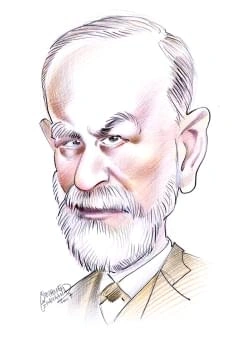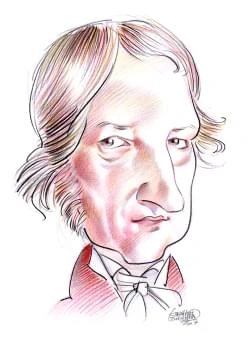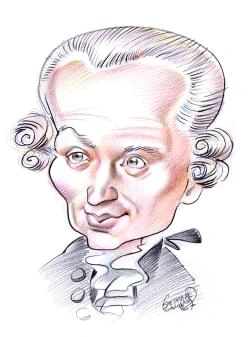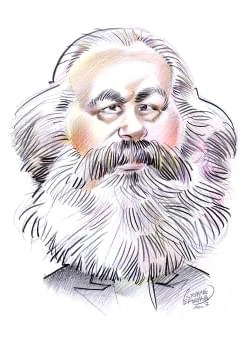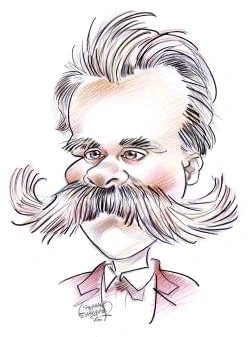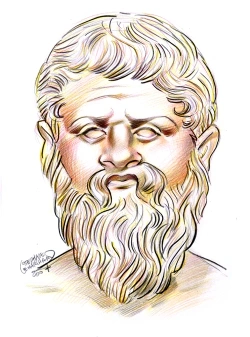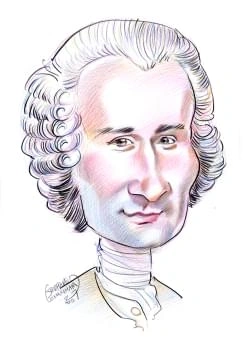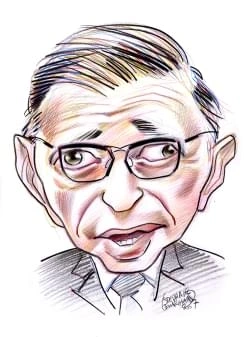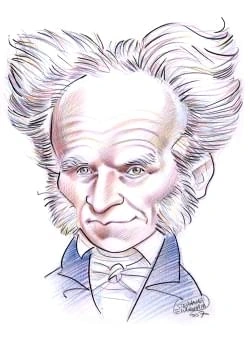59 résultats pour "fuels"
-
Fossil Fuels.
water molecules. This crystalline solid is known as gas hydrate. Because technology for the commercial extraction of gas hydrates has not yet been developed, this typeof fossil fuel is not included in most world energy resource estimates. However, in February 2007 the U.S. Department of Energy completed the drilling of a well toretrieve core samples of gas hydrates found in the Prudhoe Bay region of Alaska’s North Slope. By identifying the nature of these gas hydrates, the Energy Departmenthoped...
- fuel. n.m., nom anglais qui fut longtemps utilisé en français
-
Fire - chemistry.
were usually natural caves. Eventually people learned to dip branches in pitch to form torches. They created crude lamps by filling a hollowed out piece of stone withmoss soaked in oil or tallow (a substance derived from animal fat). By cooking with fire, prehistoric people made the meat of the animals they killed more palatable and digestible. They learned to preserve meat by smoking it over a fire,vastly decreasing the danger of periodic starvation. Cooking also enabled them to add some for...
-
Internal-Combustion Engine.
any Otto-cycle engine and in actual engines today is slightly more than 40 percent. Diesels are, in general, slow-speed engines with crankshaft speeds of 100 to 750revolutions per minute (rpm) as compared to 2500 to 5000 rpm for typical Otto-cycle engines. Some types of diesel, however, have speeds up to 2000 rpm. Becausediesels use compression ratios of 14 or more to 1, they are generally more heavily built than Otto-cycle engines, but this disadvantage is counterbalanced by theirgreater effici...
-
Rocket.
the vacuum of space, however, demonstrated that this belief was not true. In fact, rockets produce more thrust in the vacuum of space than on Earth. Air pressure andfriction with the air reduce a rocket’s thrust by about 10 percent on Earth as compared to the rocket’s performance in space. B Thrust and Efficiency Thrust is a measurement of the force of a rocket, or the amount of “push” exerted backward to move a rocket forward. Thrusts vary greatly from rocket to rocket.Engineers measure thrust...
-
Rocket - astronomy.
the vacuum of space, however, demonstrated that this belief was not true. In fact, rockets produce more thrust in the vacuum of space than on Earth. Air pressure andfriction with the air reduce a rocket’s thrust by about 10 percent on Earth as compared to the rocket’s performance in space. B Thrust and Efficiency Thrust is a measurement of the force of a rocket, or the amount of “push” exerted backward to move a rocket forward. Thrusts vary greatly from rocket to rocket.Engineers measure thrust...
-
Automobile.
Electric motors have been used to power automobiles since the late 1800s. Electric power supplied by batteries runs the motor, which rotates a driveshaft, the shaftthat transmits engine power to the axles. Commercial electric car models for specialized purposes were available in the 1980s. General Motors Corporation introduced amass-production all-electric car in the mid-1990s. Automobiles that combine two or more types of engines are called hybrids. A typical hybrid is an electric motor with ba...
-
Space Shuttle - astronomy.
The two SRBs, with their combined thrust of some 26 million newtons (about 5.8 million lb), provide most of the power for the first two minutes of flight. The SRBs takethe space shuttle to an altitude of 45 km (28 mi) and a speed of 4,973 km/h (3,094 mph) before they separate and fall back into the ocean to be retrieved,refurbished, and prepared for another flight. After the boosters fall away, the three main engines continue to provide thrust. These engines are clustered at the rear end of the...
-
-
World Energy Supply.
In the 1990s, oil production by non-OPEC countries remained strong and production by OPEC countries rebounded. The result at the end of the 20th century was aworld oil surplus and prices (when adjusted for inflation) that were lower than in 1972. Experts are uncertain about future oil supplies and prices. Low prices have spurred greater oil consumption, and experts question how long world petroleum reservescan keep pace with increased demand. Many of the world’s leading petroleum geologists beli...
-
Nuclear Energy
I
INTRODUCTION
Gundremmingen Nuclear Power Plant, Germany
The first of three boiling-water nuclear reactors at Germany's Gundremmingen plant began operating in 1966 but was
permanently shut down after being decommissioned in 1983.
such as ¯U is induced by the absorption of a neutron as in producing cesium-140, rubidium-93, three neutrons, and 200 MeV, or 3.2 × 10 -11 J (7.7 × 10 -12 cal). A nuclear fission reaction releases 10 million times as much energy as is released in a typical chemical reaction. See Nuclear Chemistry. III NUCLEAR ENERGY FROM FISSION The two key characteristics of nuclear fission important for the practical release of nuclear energy are both evident in equation (2). First, the energy per fiss...
-
Artificial Satellite - astronomy.
The first stage of a multistage rocket consists of rocket engines that provide a huge amount of force, or thrust. The first stage lifts the entire launch vehicle—with itsload of fuel, the rocket body, and the satellite—off the launch pad and into the first part of the flight. After its engines use all their fuel, the first stage portion of therocket separates from the rest of the launch vehicle and falls to Earth. The second stage then ignites, providing the energy necessary to lift the satellit...
-
Georgia (country) - country.
1917. During the subsequent Soviet period, religious practice was strongly discouraged because the Soviet state was officially atheistic; however, the GeorgianOrthodox Church was allowed to function openly. Orthodox Christianity is the religion of about 58 percent of the Georgian population. Muslims represent about 19 percent of the country’s population, with ethnicAzerbaijanis, Kurds, and Ajars comprising the principal Muslim groups. Ajars are ethnic Georgians who converted to Islam in the 17th...
-
Airplane.
For example, the Anglo-French Concorde, a commercial supersonic aircraft, was generally limited to over-water routes, or to those over sparsely populated regions ofthe world. This limitation impacted the commercial viability of the Concorde, which ended its regular passenger service in October 2003. Designers today believe theycan help lessen the impact of sonic booms created by supersonic airliners but probably cannot eliminate them. One of the most difficult practical barriers to supersonic fl...
-
Acid Rain.
the Adirondack Mountains of New York State, a quarter of the lakes and ponds are acidic, and many have lost their brook trout and other fish. In the middleAppalachian Mountains, over 1,300 streams are afflicted. All of Norway’s major rivers have been damaged by acid rain, severely reducing salmon and trout populations. E Plants and Animals The effects of acid rain on wildlife can be far-reaching. If a population of one plant or animal is adversely affected by acid rain, animals that feed on tha...
-
TPE: Qu'est-ce-qu'une marée noire ?
du pétrole. Les problèmes commencent en fait avec le résidu. Celui-ci est en effet dense et visqueux. Une partie va se dissoudre lentement dans l'eau avec pourconséquence de densifier encore le reste de la nappe et de polluer gravement, car les molécules dissoutes à ce stade sont extrêmement toxiques pour la vie sous-marine. Le reste, presque du goudron tant c'est dense, est ballotté, brassé jusqu'à former une émulsion que les spécialistes appellent " mousse au chocolat ". Un nom qui lui vient c...
-
Global Warming.
some of the warming influence of increasing greenhouse gases. A1 Carbon Dioxide Carbon dioxide is the second most abundant greenhouse gas, after water vapor. Carbon dioxide constantly circulates in the environment through a variety of naturalprocesses known as the carbon cycle. It is released into the atmosphere from natural processes such as eruptions of volcanoes; the respiration of animals, whichbreathe in oxygen and exhale carbon dioxide; and the burning or decay of plants and other organic...
-
-
Armenia (country) - country.
because of ethnic tension brought on by a secessionist conflict in Nagorno-Karabakh, a region inhabited predominantly by Armenians in western Azerbaijan. In thereverse direction, many Armenian refugees entered Armenia from Azerbaijan during the conflict. Armenia’s official state language is Armenian, an Indo-European language with no surviving close relatives. It has a unique 38-letter alphabet that dates from the early5th century. Of its many spoken dialects, the most important are Eastern or Y...
-
Environment.
escape into space of the infrared energy radiated back out by Earth. This process is referred to as the greenhouse effect. These gases, primarily carbon dioxide,methane, nitrous oxide, and water vapor, insulate Earth’s surface, helping to maintain warm temperatures. Without these gases, Earth would be a frozen planet with anaverage temperature of about -18°C (about 0°F) instead of a comfortable 15°C (59°F). If the concentration of these gases rises, they trap more heat within theatmosphere, caus...
-
Greenhouse Effect.
addition, humans cut down huge tracts of trees for lumber or to clear land for farming or building. This process, known as deforestation, can both release the carbonstored in trees and significantly reduce the number of trees available to absorb carbon dioxide. As a result of these human activities, carbon dioxide in the atmosphere is accumulating faster than Earth’s natural processes can absorb the gas. By analyzing airbubbles trapped in glacier ice that is many centuries old, scientists have d...
-
Sun - astronomy.
A The Sun’s Place in the Milky Way The Milky Way Galaxy contains about 400 billion stars. All of these stars, and the gas and dust between them, are rotating about a galactic center. Stars that arefarther away from the center move at slower speeds and take longer to go around it. The Sun is located in the outer part of the galaxy, at a distance of 2.6 × 10 17 km (1.6 × 10 17 mi) from the center. The Sun, which is moving around the center at a velocity of 220 km/s (140 mi/s), takes 250 million y...
-
Carbon - chemistry.
Graphite is black and slippery and conducts electricity. In graphite, the atoms form planar, or flat, layers. Each layer is made up of rings containing six carbon atoms.The rings are linked to each other in a structure that resembles the hexagonal mesh of chicken wire. Each atom has three sigma bonds (with 120° between any two ofthe bonds) and belongs to three neighboring rings. The fourth electron of each atom becomes part of an extensive pi bond system. Graphite conducts electricity,because th...
-
Conservation.
cancers, Hodgkin’s disease and leukemia. Unfortunately, human activities have greatly reduced biodiversity around the world. The 20th century encompasses one of the greatest waves of extinction, orelimination of species, to occur on the planet. The greatest threat to biodiversity is loss of habitat as humans develop land for agriculture, grazing livestock, industry,and habitation. The most drastic damage has occurred in the tropical rain forests, which cover less than seven percent of the Earth’...
-
Air Pollution.
Several pollutants attack the ozone layer. Chief among them is the class of chemicals known as chlorofluorocarbons (CFCs), formerly used as refrigerants (notably in airconditioners), as agents in several manufacturing processes, and as propellants in spray cans. CFC molecules are virtually indestructible until they reach thestratosphere. Here, intense ultraviolet radiation breaks the CFC molecules apart, releasing the chlorine atoms they contain. These chlorine atoms begin reacting withozone, br...
-
Afghanistan - country.
D Climate Most of Afghanistan has a subarctic mountain climate with dry and cold winters, except for the lowlands, which have arid and semiarid climates. In the mountains and afew of the valleys bordering Pakistan, a fringe effect of the Indian monsoon, coming usually from the southeast, brings moist maritime tropical air in summer.Afghanistan has clearly defined seasons: Summers are hot and winters can be bitterly cold. Summer temperatures as high as 49°C (120°F) have been recorded in thenorth...
-
-
Brazil - country.
occasional droughts. Brazil contains a wealth of mineral and plant resources that have not yet been fully explored. It possesses some of the world’s largest deposits of iron ore and containsrich deposits of many other minerals, including gold and copper. Brazil’s fossil fuel resources are modest, but this limitation is offset by the considerable hydroelectricpotential of the nation’s many rivers. Although Brazil is an important producer of tropical crops, areas of highly fertile land are limited...
-
Contaminación del agua - ciencias de la naturaleza.
cultivo contribuyen en gran medida a este proceso. El proceso de eutrofización puede ocasionar problemas estéticos, como mal sabor y olor del agua, y un cúmulo de algaso verdín que puede resultar estéticamente poco agradable, así como un crecimiento denso de las plantas con raíces, el agotamiento del oxígeno en las aguas más profundasy la acumulación de sedimentos en el fondo de los lagos, así como otros cambios químicos, tales como la precipitación del carbonato de calcio en las aguas duras. Ot...
-
Nova - astronomy.
When first discovered, the spectrum of a nova shows that the expanding layers of gas that cause the brightening have temperatures of 40,000° to 50,000° C (70,000°to 90,000° F)—about eight times as hot as the surface of the Sun. By the time a nova reaches maximum brightness, the temperature of the material has fallen to about10,000° C (about 20,000° F), or lower. Just after maximum brightness, the escaping cloud of gas cools and expands enough to become transparent. This transparency allows astro...
-
Air - chemistry.
lighting systems, fertilizers, and semiconductors (substances used to make the chips in computers, calculators, televisions, microwave ovens, and many other electronicdevices). A Oxygen More than half of the oxygen produced in the United States is used by the steel industry, which injects the gas into basic oxygen furnaces to heat and produce steel(see Iron and Steel Manufacture: Basic Oxygen Process ). Metalworkers also combine oxygen with acetylene to produce high-temperature torch flames th...
-
Hydrogen - chemistry.
Hydrogen gas does not usually react with other chemicals at room temperature. That is, it does not split into two hydrogen atoms to combine with other chemicals. Thebond between the hydrogen atoms is very strong and can only be broken with a large amount of energy. However, when heated with a flame or a spark, hydrogen gaswill react violently with oxygen in the air to produce water in the following reaction: 2H2 + O 2 → 2H 2O This chemical equation shows that two hydrogen molecules (H 2) and o...
-
Switzerland - country.
formation over higher elevations. The wind reverses direction about sundown and moves down the valley as a cool downdraft. The foehn, which occurs during the wintermonths, is a dry and relatively warm airflow that is drawn northward over the Alps. The foehn can quickly melt snow and ice, increasing the risk of mudslides andavalanches. D Natural Resources Waterpower is the chief natural resource of Switzerland. The principal source of water is runoff from the considerable annual precipitation th...
-
Pollution.
One of the greatest challenges caused by air pollution is global warming, an increase in Earth’s temperature due to the buildup of certain atmospheric gases such ascarbon dioxide. With the heavy use of fossil fuels in the 20th century, atmospheric concentrations of carbon dioxide have risen dramatically. Carbon dioxide and othergases, known as greenhouse gases, reduce the escape of heat from the planet without blocking radiation coming from the Sun. Because of this greenhouse effect,average glob...
-
September 11 Attacks - U.
around and flew it back toward Washington, D.C. Flying low and fast, the airplane hit the Pentagon at 9:37 AM. In a bit of good fortune, the plane crashed into the west side of the building, which had recently been reinforced with stronger construction and blast-resistant windows in order to withstand a terrorist attack. Even so, theplane penetrated three of the Pentagon’s five concentric rings, taking a chunk out of the building and incinerating dozens of offices and the people who worked in t...
-
-
Ireland - country.
F Plants and Animals Ireland’s animal life does not differ markedly from that of England or France. Over many centuries of human settlement almost all of Ireland’s natural woodlands werecleared, and indigenous animals such as bear, wolf, wildcat, beaver, wild cattle, and the giant Irish deer (a type of fallow deer) gradually disappeared. However, thehardy and versatile Connemara pony, Ireland’s only native pony breed, has been used by Irish farmers since prehistoric times. The great auk, or gar...
-
Les centrales thermiques
• Toutefois, ces centrales utilisent de plus en plus la biomasse . • La plupart des centrales thermique s sont monoénergétiques et ne brûlent que du charbon ou que du pétrole . Certaines centrales dites « combinées » disposent de différents types de chaudière destinés à brûler divers types de sources d'énergie comme du gaz, du pétrole , des déchets et du bois . • La diversification des sources d'énergie permet de faire les meilleurs choix économiques...
-
Latvia - country.
The population of Latvia is about 2,245,423 (2008 estimate), yielding an average population density of 35 persons per sq km (91 per sq mi). Latvia is highly urbanized.Some 66 percent of the population lives in urban areas, with nearly one-third of the total population residing in the capital, Rīga. Other important cities includeDaugavpils, an industrial center in the southeast, on the Daugava River; Liep āja, an important port on the Baltic Sea; Jelgava, an industrial center near Rîga; J ūrmala,...
-
Culture.
form of knowledge, such as scientific discoveries; objects, such as works of art; and traditions, such as the observance of holidays. C1 Ethnocentrism and Cultural Relativism Self-identity usually depends on culture to such a great extent that immersion in a very different culture—with which a person does not share common ways of life orbeliefs—can cause a feeling of confusion and disorientation. Anthropologists refer to this phenomenon as culture shock. In multicultural societies —societies s...
-
North Dakota - geography.
Bismarck, the growing season averages 134 days, as the average date of the last killing frost is May 11 and that of the first killing frost is September 22. The length ofthe growing season drops to about 110 days in the northerly reaches of the state. The long periods of summer sunshine at this latitude, providing as much as 16 hoursof daylight in summer, help crops to mature quickly, thus compensating somewhat for the relatively short growing season. Temperatures in the north are, on the averag...
-
North Dakota - USA History.
Bismarck, the growing season averages 134 days, as the average date of the last killing frost is May 11 and that of the first killing frost is September 22. The length ofthe growing season drops to about 110 days in the northerly reaches of the state. The long periods of summer sunshine at this latitude, providing as much as 16 hoursof daylight in summer, help crops to mature quickly, thus compensating somewhat for the relatively short growing season. Temperatures in the north are, on the averag...
-
Compétitivité de l'électricité nucléaire
duite en 1979 fixaient le caul du kWh (en centimes) a 4,85, soit un peu plus de Ia moltie du coat du kWh fourni par les centrales classiques (9,56). Une certaine detente 'Rant intervenue en 1975 sur le prix du Wrote brut, les estima- tions etablies au debut de 1976 pour le coOt du kWh pro- duff en 1985 ont restreint cet ecart, les coots respectifs &ant 7,6 et 11,5, soft un rapport nuclealrenuel de 0,66. Mais ces estimations supposent des centrales nucleaires fonctionnant a pleine charge, soit 6...
-
ROCKETS AND LAUNCH VEHICLES
direction is balanced by an equal force in the opposite direction. This principle is well shown by the backward movement, or recoil, of a cannon when it fires a cannonball. The English genius Isaac Newton first stated the reaction principle as his third law of motion: "to every action there is an equal and opposite reaction." Rockets are often called reaction engines. 2.Solid propellants The fuel and oxidizer in a rocket are called its propellants, because when they burn they produce the gas...
-
-
Turbine.
steam turbine has supplanted the reciprocating engine as a prime mover in large electricity-generating plants and is also used as a means of jet propulsion. Steam turbines are used in the generation of nuclear power and in nuclear ship propulsion. They operate with fuel-fired boilers for power generation. In cogenerationapplications requiring both process heat (heat used in an industrial process) and electricity, steam is raised at high pressure in the boiler and extracted from the turbineat th...
-
Republic of Singapore - country.
Singaporeans of Chinese and Indian ancestry live in small, nuclear families. Housing favors smaller families, as most units consist of small apartments in high-risebuildings. Western clothing is common, and foods reflect the Chinese, Malay, and Indian origins of the people. D Social Issues Since Singapore became an independent state in 1965, government policies have brought orderliness and efficiency to the country. Examples are supplanting slum andsquatter areas with high-rise public housing p...
-
Turkmenistan - country.
A Ethnic Groups With Turkmens constituting 77 percent of the population, Turkmenistan is the most ethnically homogeneous of the Central Asian republics. Uzbeks make up the largestminority group, with about 9 percent of the population. Other ethnic groups include Russians, Kazakhs, Tatars, Ukrainians, Azeris (ethnic Azerbaijanis), Armenians, andBaluch. In 1993 a bilateral treaty between Turkmenistan and Russia granted dual citizenship to Russians in the republic. At the 1995 census Russians cons...
-
Industrial Revolution
I
INTRODUCTION
Industrial Revolution, widespread replacement of manual labor by machines that began in Britain in the 18th century and is still continuing in some parts of the world.
The most important advance in iron production occurred in 1784 when Englishman Henry Cort invented new techniques for rolling raw iron, a finishing process thatshapes iron into the desired size and form. These advances in metalworking were an important part of industrialization. They enabled iron, which was relativelyinexpensive and abundant, to be used in many new ways, such as building heavy machinery. Iron was well suited for heavy machinery because of its strength anddurability. Because of t...
-
Industrial Revolution .
The most important advance in iron production occurred in 1784 when Englishman Henry Cort invented new techniques for rolling raw iron, a finishing process thatshapes iron into the desired size and form. These advances in metalworking were an important part of industrialization. They enabled iron, which was relativelyinexpensive and abundant, to be used in many new ways, such as building heavy machinery. Iron was well suited for heavy machinery because of its strength anddurability. Because of t...
-
Ontario - Geography.
governed Ontario’s initial settlement and development. The province’s most important river is the St. Lawrence. Its route was much improved and enlarged by dredgingand canal building in the mid-20th century. This enabled large ocean-going vessels to reach Great Lake ports ( see St. Lawrence Seaway). The Ottawa River was an important early route to the interior for fur traders and timber merchants. The Niagara River, because of its falls, is a great center of hydroelectric power as well as aninte...
-
Ontario - Canadian History.
governed Ontario’s initial settlement and development. The province’s most important river is the St. Lawrence. Its route was much improved and enlarged by dredgingand canal building in the mid-20th century. This enabled large ocean-going vessels to reach Great Lake ports ( see St. Lawrence Seaway). The Ottawa River was an important early route to the interior for fur traders and timber merchants. The Niagara River, because of its falls, is a great center of hydroelectric power as well as aninte...
-
Spain - country.
B Natural Resources Spain has a number of mineral resources. The largest known deposits are of iron ore, zinc, and lead. Spain also produces significant quantities of copper and mercury.These deposits are mined mainly in Huelva province in southwestern Spain, around Cartagena on the Mediterranean, and at various points along the Bay of Biscay inthe north. Additionally, uranium is mined in the region of Extremadura, near the Portuguese frontier, where pyrites, fluorspar, gypsum, tungsten, and po...
-
-
Federal Republic of Germany - country.
B Rivers and Lakes Rivers have played a major role in Germany’s economic development. The Rhine River flows in a northwesterly direction from Switzerland through much of westernGermany and The Netherlands into the North Sea. It is a major European waterway and a pillar of commerce and trade. Its primary German tributaries include theMain, Mosel, Neckar, and Ruhr rivers. The Oder (Odra) River, along the border between Poland and Germany, runs northward and empties into the Baltic; it provides an...
-
Corn - biology.
small larvae of the cucumber beetles feed on the root system of the developing plants. VII PRODUCTION AND CONSUMPTION World output of corn at the beginning of the 21 st century was about 603 million metric tons annually; in volume of production, corn ranked first, ahead of rice and wheat. A net gain of about 51 percent in production was realized during the last two decades; intensive cultivation with heavy use of fertilizer and herbicides wasresponsible for the increase. The United States is t...
}})
